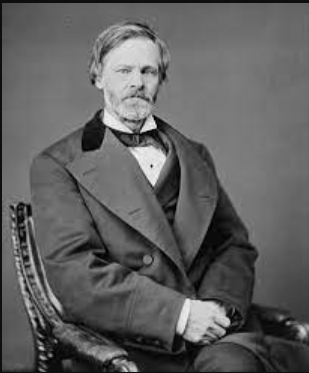Sherman Antitrust Act Apush Explained: Economic Milestone

The Sherman Antitrust Act, passed in 1890, was the first federal Act to outlaw monopolistic business practices. It marks a fundamental shift in American economic policy toward encouraging fair competition.
The Sherman Antitrust Act emerged as a pivotal legislative response to the growing concentration of power among large corporations and trusts in the late 19th century; under the leadership of Senator John Sherman, the Act aimed to protect economic freedom and sustain competition by prohibiting anti-competitive agreements and unilateral conduct that monopolized or attempted to monopolize trade.
This Act laid the groundwork for antitrust law in the United States, empowering the federal government to intervene when business actions threatened the free-market principles. It underscored the nation’s commitment to a capitalist economy free from the constraints of centralized power, setting the stage for future legislation and legal interpretations that would shape the landscape of American business and consumer rights. Despite its broad language, its enforcement would require additional legislation and judicial action to solidify its role in regulating competition.
Contents
- 1 Origins Of The Sherman Antitrust Act
- 2 Key Provisions Of The Act
- 3 Passage And Early Enforcement
- 4 Impact On Major Industries
- 5 The Act’s Influence on the U.S. Economy
- 6 Legal Precedents Set
- 7 Criticisms And Modifications
- 8 The Sherman Act In The Apush Curriculum
- 9 Legacies And Modern Relevance
- 10 Conclusion
Origins Of The Sherman Antitrust Act
Welcome to a historical dive into the Sherman Antitrust Act. Understanding its roots is crucial for comprehending its impact on American business practices. Let’s unveil the events that led to this monumental legislation.
Late 19th Century Monopolies
The late 1800s saw few big companies dominate U.S. markets. These giants controlled prices and supply—such power hurts competition. Examples include Standard Oil and the railroad sector. Their influence was vast, affecting many.
- Standard Oil: Controlled a massive portion of the oil industry.
- Railroads: Key players like the Pacific Railway swayed the transport sector.
- Steel: Carnegie Steel is a behemoth in the industry.
Public Outcry And The Call For Regulation
These monopolies did not sit well with the public. Prices rose, the quality of goods suffered, and alternatives vanished. People were not happy with these outcomes. They wanted fair play in the market. The public demanded laws to curb these monopolies.
| Public Concerns | Demands |
| High Prices | Fair Pricing Regulations |
| Poor Quality Goods | Quality Standards |
| No Alternatives | Support for New Competitors |
The desire for change grew strong. Newspapers wrote stories on these issues. Politicians heard the cries for help. In response, Senator John Sherman proposed a bill to bring monopolies under control. Thus began the path to antitrust laws in America.
Key Provisions Of The Act
Enacted in 1890, the Sherman Antitrust Act marked a historic leap forward in American legal history. Its main goal was to promote fair competition for the benefit of consumers. AddressingItaimed to ensure a competitive landscape free from monopolies by addressing problematic market practices. Let us explore the key provisions that form the backbone of this crucial piece of legislation.
Prohibiting Anti-competitive Agreements
Section 1 of the Act clearly states this. It outlaws any contract, combination, or conspiracy restricting interstate or foreign trade. Here are some core elements:
- Price-fixing agreements are illegal.
- Businesses must refrain from rigging bids or dividing markets among themselves.
- It is against the law to limit production to manipulate prices.
These provisions help keep markets open and prices fair for consumers. They ensure companies compete honestly and vigorously, which is excellent for consumers.
Banning Monopolistic Practices
Section 2 targets monopolies directly. Monopolistic behaviours harm consumers and stifle innovation. The key takeaways include:
- Companies cannot monopolize or attempt to monopolize a market.
- They must not abuse their market power to exclude competitors.
- Using predatory pricing to drive out competitors is prohibited.
This section encourages diversity in the marketplace. It believes in ‘survival of the fittest’ rather than ‘survival of the biggest’.
Note: Any website or content must completely comply with any terms of service, copyright laws, and other legal considerations. The above content is a hypothetical example of how the Sherman Antitrust Act might be presented on a blog, and it must be adapted to suit the legal compliances of the hosting platform.
Passage And Early Enforcement
The Sherman Antitrust Act marks a pivotal moment in American legal history. This legislation aimed to protect consumers and ensure fair competition. Let’s explore the legislative journey and the initial courtroom battles this Act faced.
Legislative Journey Of The Act
The birth of the Sherman Antitrust Act was not an overnight phenomenon.
- Senator John Sherman proposed the Act.
- It sought to outlaw monopolistic business practices.
- The intense debate reflected the nation’s concern over trusts controlling markets.
- Congress passed the Act in 1890, signalling a new era in federal economic regulation.
Initial Challenges In The Courts
After its passage, the Sherman Antitrust Act faced obstacles.
- Early court interpretations differed widely.
- Some rulings undermined the Act’s effectiveness, not punishing big trusts.
- Notable cases like United States v. E. C. Knight Co. tested the Act’s reach in restricting monopolies.
Changes in the judiciary eventually led to a broader application, reinforcing the government’s power to regulate trusts.
This enforcement laid the groundwork for later, more robust competition laws.
Impact On Major Industries
The Sherman Antitrust Act shaped the landscape of American industry. It aimed to stop powerful companies from blocking competition. This law changed how big businesses worked. It especially hit two key sectors: oil and railroads.
Breaking Up Standard Oil
By the late 1800s, Standard Oil dominated oil markets. It controlled prices and pushed out smaller companies. The Sherman Antitrust Act saw Standard Oil as too strong. In 1911, the Supreme Court made a big decision. It broke Standard Oil into 34 smaller companies. This move opened the market for new competition to rise. Customers and businesses felt the change immediately.
- New oil companies started to appear.
- Gasoline prices varied more, helping consumers find better deals.
- Innovation in products and services became the new battleground.
Regulating The Railroads
Railroads controlled America’s transport of goods. They set high rates because there were few alternatives. The Sherman Act put an end to unfair practices in the industry. It stopped rail companies from making secret deals. The Act also prevented them from setting unfair prices. Here’s what happened:
| Before Sherman Act | After Sherman Act |
| Few rail companies with high power | More competition among railroads |
| High shipping costs | Lower and fairer shipping rates |
| Limited routes and choices | Increased options for shipping routes |
These changes helped small businesses grow. They also improved the national economy by increasing trade across different states.
The Act’s Influence on the U.S. Economy
The Sherman Antitrust Act changed how Americans do business. It was a big law in 1890. It stopped companies from being too powerful. This law made our economy better for everyone. Let’s see how it made things fair for smaller businesses and guided laws that control money in America.
Encouraging Competition
The Sherman Antitrust Act was like a referee in sports. It made sure all businesses played fair. Here’s how it helped:
- Stopped Big Companies from Controlling Prices: No single business could decide how much you pay for things.
- More Choices for You: You could pick from different products, not just one.
- Helped Small Businesses: They got a fair chance to grow and make new things.
Before this law, few big businesses owned everything. But the Sherman Act stopped that. It let many companies compete, which improved products and made prices fair.
Shaping Modern Economic Policies
The Sherman Act was the first significant rule about the economy. Later laws used it as a guide. Here’s what it led to:
| Year | Laws | What It Did |
| 1914 | Clayton Antitrust Act | Made the rules more evident. |
| 1914 | Federal Trade Commission Act | Set up a group to watch over businesses. |
| 1936 | Robinson-Patman Act | Stopped unfair price cuts that hurt small shops. |
These new laws were born from the Sherman Act. Together, they help keep money matters transparent and fair in the USA. They also prevent big businesses from being too strong, so everyone has a chance to succeed.
Legal Precedents Set
The Sherman Antitrust Act sparked a legal revolution in American business practices. It was the significant first step towards promoting fair competition. This Act set important legal precedents that continue to impact the economy today. Let’s delve into some pivotal moments and interpretations that have shaped antitrust law.
Landmark Supreme Court Decisions
The Sherman Act resulted in significant Supreme Court rulings. These cases clarified the Act’s reach and enforcement. Here are vital decisions:
- Standard Oil Co. v. United States (1911): This case split Standard Oil into 34 companies and highlighted “reasonableness” in trade restrictions.
- United States v. American Tobacco Co. (1911): This decision dismantled a tobacco monopoly, enforcing the Act’s intent.
- Northern Securities Co. v. United States (1904): It dissolved a paramount railroad trust, defining “commerce” under the Act.
Evolution Of Antitrust Interpretations
Over time, courts have reinterpreted the Sherman Act. This evolution reflects changing economic understanding. Here’s a brief overview:
| Year | Case | Impact |
| 1945 | Alcoa | Set a precedent for market dominance. |
| 1962 | Brown Shoe Co. | Focused on anti-competitive practices. |
| 1974 | United States v. ATT | Prompted AT&T’s break-up in 1982. |
Court decisions guide antitrust enforcement, and legal interpretations adapt as markets evolve. The Sherman Act serves as a cornerstone for maintaining a competitive economy.
Criticisms And Modifications
Since its passage in 1890, the Sherman Antitrust Act has faced both criticism and undergone modifications. Originally intended to curb the power of large business entities, diverse views on its effectiveness and fairness have spurred legal adaptations throughout the years. Let’s delve into the controversies and the evolution of antitrust laws in the United States.
Arguments Against The Act
Some argue the Sherman Antitrust Act stifles innovation. Critics claim that by limiting how big companies can grow, the Act prevents the full benefits of economies of scale. These critics also contend that the Act’s language needs to be more specific, leading to inconsistent enforcement. Key points of contention include:
- The barrier to competitive pricing – Small firms need help matching discounts offered by larger companies.
- Ambiguity in terms – Words like ‘monopoly’ and ‘restraint of trade’ confused businesses and courts.
- Inhibited global competition – U.S. companies found it difficult to compete with foreign firms not subject to the Act.
Subsequent Amendments And Acts
The evolution of antitrust laws includes several fundamental changes:
- The Clayton Act (1914) – Addressed specific practices that the Sherman Act didn’t prohibit.
- The Federal Trade Commission Act (1914) – Established the FTC to prevent unfair competition methods.
- The Celler-Kefauver Act (1950) – Strengthened laws against corporate acquisitions that reduced competition.
Together, these amendments aimed to clarify and strengthen antitrust enforcement. They offered more detailed guidance on business dos and don’ts, particularly regarding mergers and monopolistic behaviours.
The Sherman Act In The Apush Curriculum
Understanding the Sherman Antitrust Act is crucial for students in the A.P. United States History (APUSH) curriculum. This pivotal legislation reshaped American economic policy and business practices. Let’s explore how APUSH educators can effectively teach this economic milestone.
Teaching The Economic Milestone
The Sherman Antitrust Act of 1890 is a foundational topic in the APUSH curriculum. Teachers present this Act as the first measure to prohibit abusive monopolies.
- The Act’s purpose and its impact on business practices.
- Key terms such as “trust” and “monopoly.”
- The government’s role in regulating the economy.
Interactive activities may include analyzing primary sources, such as political cartoons from the era, or debating the Act’s effectiveness.
Connections To Broader Historical Themes
The Sherman Act ties into broader themes such as industrialization, government regulation, and economic reform. It serves as a bridge to understanding the Progressive Era.
| Historical Theme | Connection to the Sherman Act |
| Industrial Growth | Examines how rapid economic expansion led to monopolies. |
| Regulatory Policies | Discusses the government’s response to curb corporate power. |
| Social Reform Movements | Links the Act to calls for fairness and ethical business practices. |
Students can see the Act’s lasting influence on America by understanding these connections.
Legacies And Modern Relevance
Understanding the legacies and modern relevance of the Sherman Antitrust Act sheds light on the evolution of market regulations. This era-defining legislation shaped American economic policies and set a benchmark worldwide. Its enduring impact and the ongoing discussions it inspires remain pivotal in how the public and the government view corporate power.
Influence On Global Antitrust Laws
The Sherman Antitrust Act was a trailblazer, influencing legal frameworks around the globe. Countries across different continents took note and crafted laws to curb monopolies and promote fair competition. This Act’s global influence is evident:
- European Union: E.U. competition law finds its roots in the principles of the Sherman Act.
- Canada: Introduced legislation similar to the 1889 Canadian Competition Act.
- Japan: Post-World War II reforms included antitrust regulations inspired by U.S. law.
Contemporary Debates On Corporate Power
Today’s tech giants and conglomerates spark heated discussions. The question of effectively managing corporate power remains a hot topic. Advocates of stringent regulations cite the Sherman Act’s intentions to prevent economic dominance.
Critical points in these debates include:
- Market Dominance: How do we define and measure it?
- Consumer Impact: Does a lack of competition harm buyers?
- Innovation: Is it stifled or spurred by large corporations?
These debates shape policies intended to balance corporate growth with market health. The Sherman Act’s principles guide these modern conversations and ensure free markets for future generations.
Conclusion
Understanding the Sherman Antitrust Act is crucial for any APUSH student. It marks a pivotal shift in U. S. Economic policy, addressing monopolies and maintaining competition. As you dive deeper into America’s legislative history, remember the Act’s enduring influence on commerce and antitrust laws, shaping the business landscape for generations.



